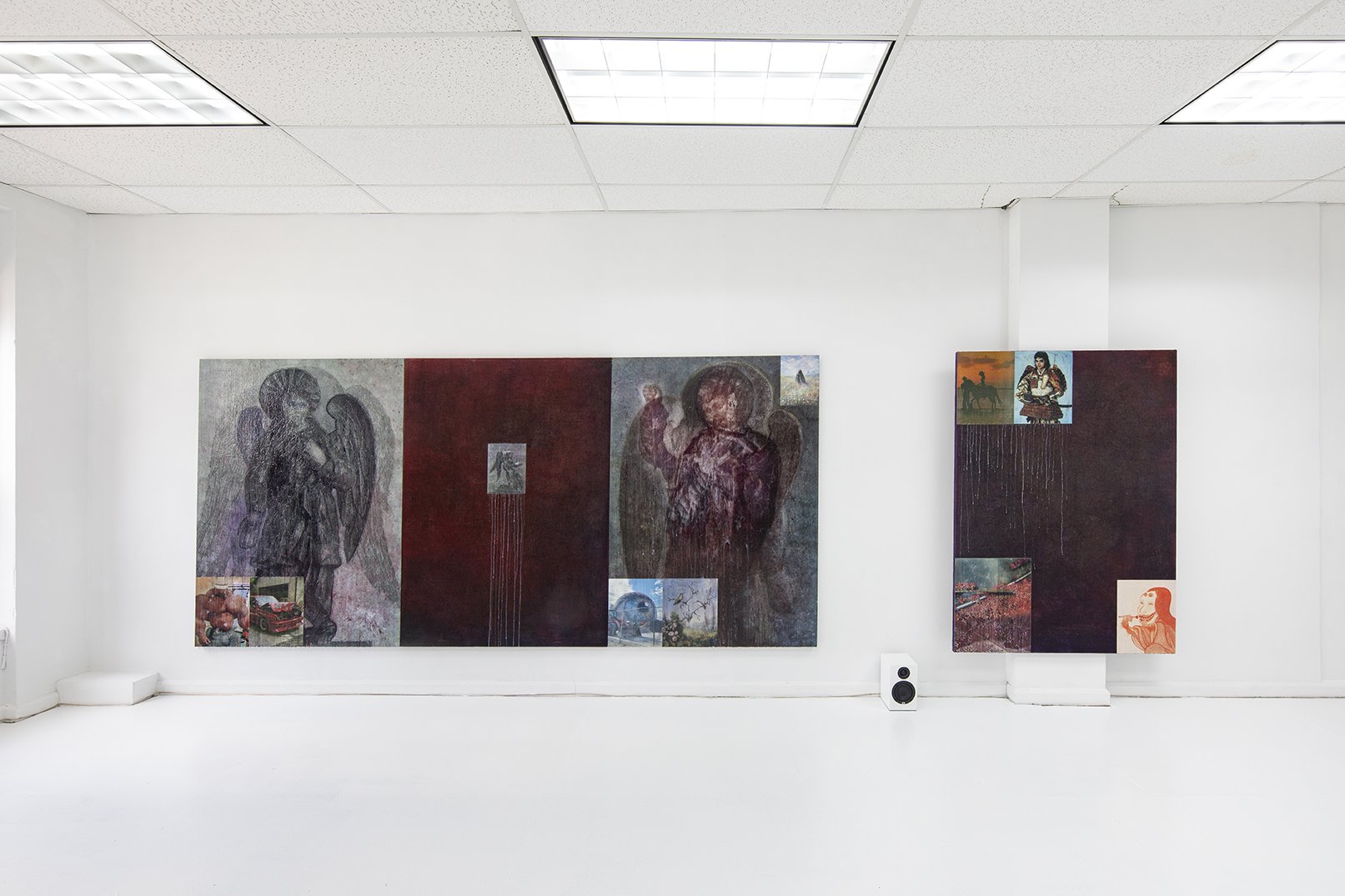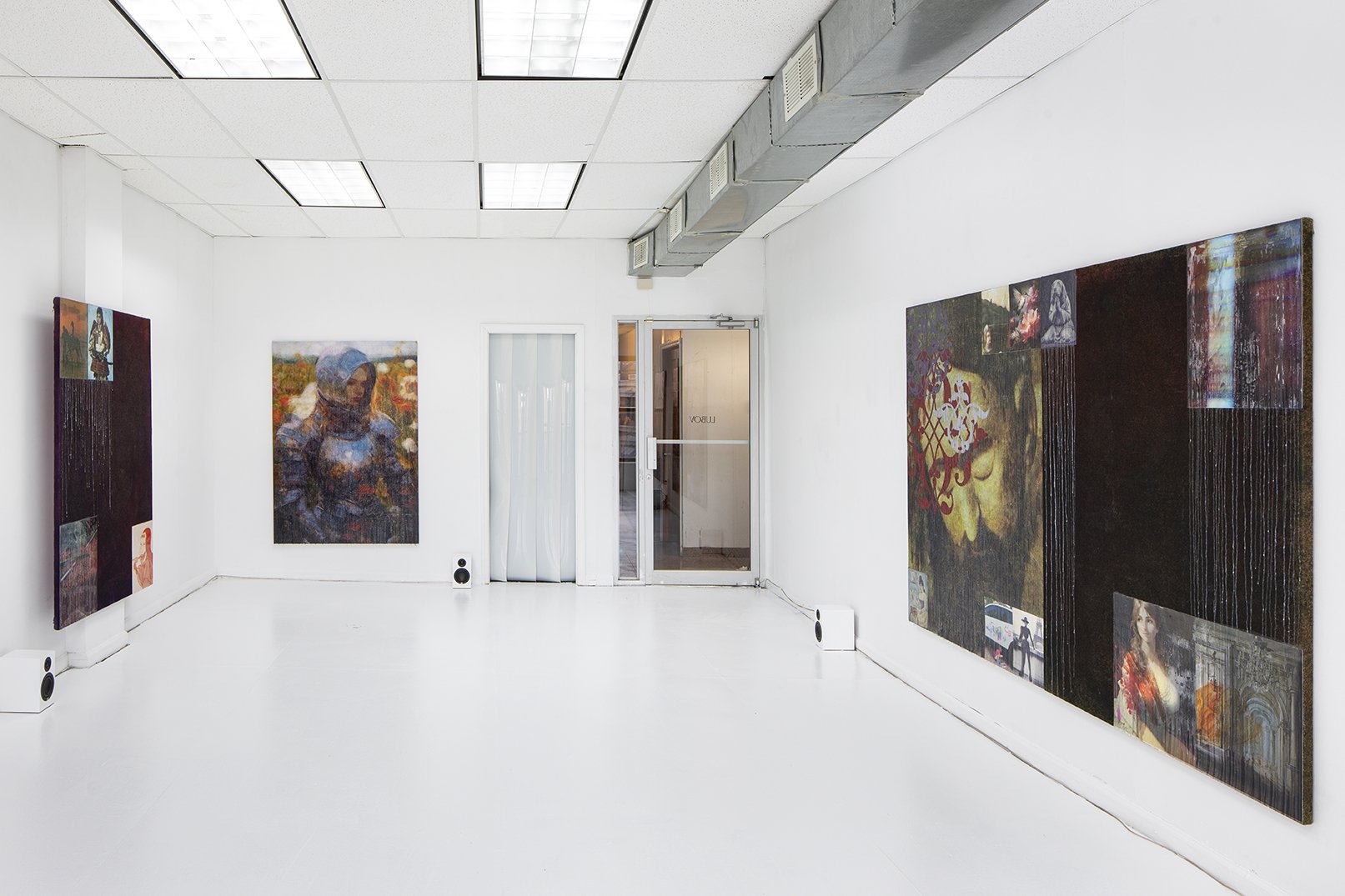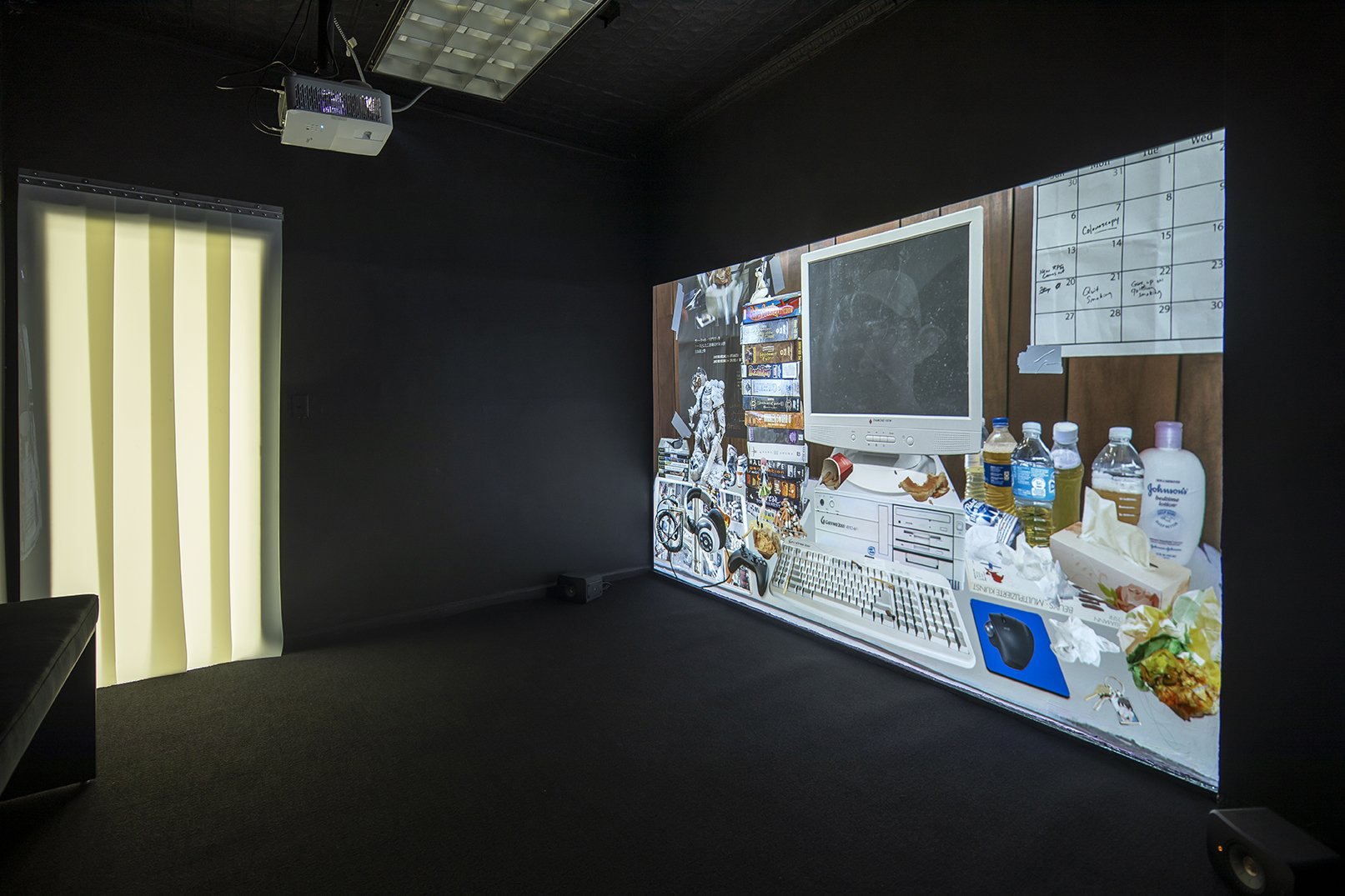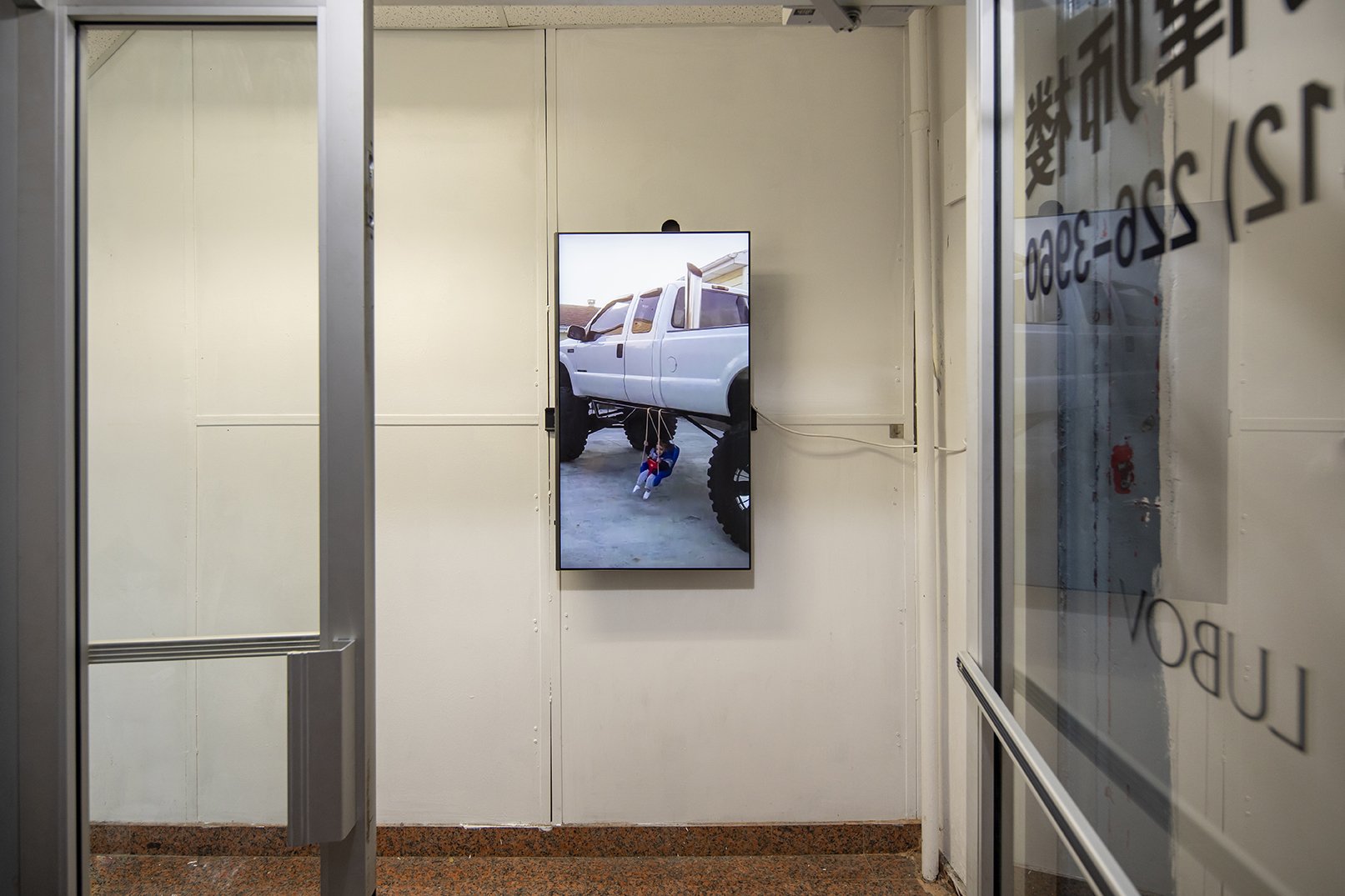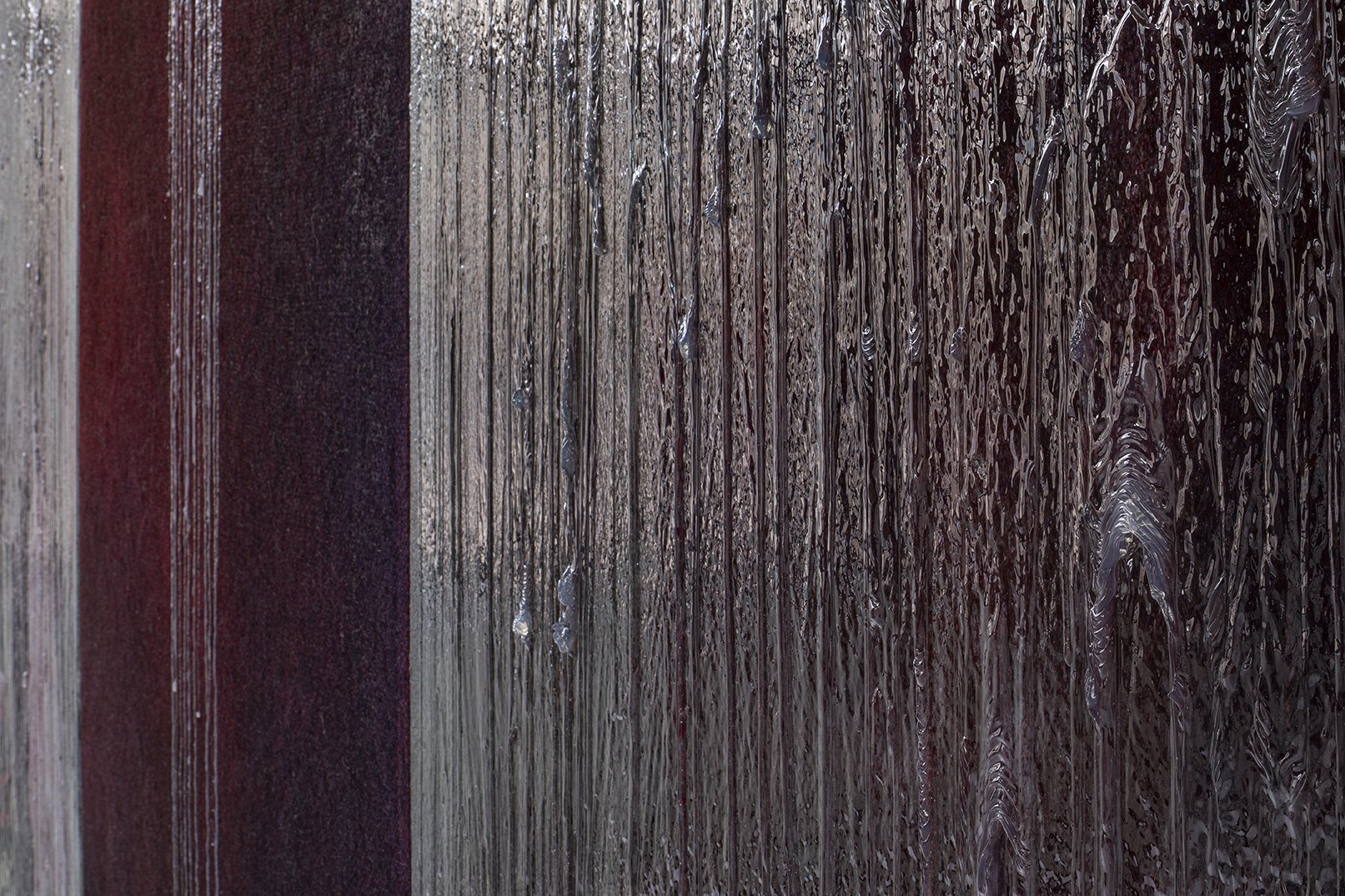Jon Rafman & Parker Ito
Poets, Gamblers, Fools
November 4, 2023–January 14, 2024
Reception: Saturday November 4, 6–9pm
organized by Grant Tyler
On August 12, 2009, Parker (b. 1986) emailed Jon (b. 1981) for the first time in response to an article Jon had written for Art Fag City’s IMG MGMT series about Jon’s project “The Nine Eyes of Google Street View”. He sent this link about a Google Maps car that took photos of itself running over a deer. Jon, fresh out of graduate school, and Parker, who was at that time finishing his undergraduate degree, were both bright eyed, idealistic, and ambitious youths with art dreams, a bonding point for the two. Both knew they wanted to be professional artists and both found themselves immersed in an international, online community formed around an ecosystem of surfclubs, chat rooms, and early social media sites. The edges of this new ecosystem had not made themselves completely visible yet, seemingly limitless, raw and unexplored. It seemed anything was possible. The effect was a deepened sense of enthusiasm and an almost utopic sense about the potential for a new kind of art. Eventually some of the people involved in this loose, borderless social milieu would gain mainstream artworld recognition. Jon became Parker's artist older brother and both found success in that context. Today, most people know this group of artists under the label “Post Internet”. Jon and Parker agree that the term Post Internet is unproductive and misleading. Below are three definitions that Parker believes the term Post Internet can refer to:
Post Internet is a condition of experience shared by all mankind defined by the existence of a unified global digital network. The invention of the Internet recontextualizes everything that ever existed before its creation. Every artwork ever made is now post-Internet. This is the most accurate definition of Post Internet.
Post Internet is a finite marketing category in the arts industry that refers to artists and artworks that thematize the Internet through an institutionalized, sterilized, and corporate aesthetic.
Post Internet was a specific social and cultural milieu that utilized the Internet as a source of creativity spanning from the years of 2006-2013.
Exponents of the third definition of Post Internet³ (like Jon and Parker) were responsible for pushing through new ideas about what art could and should be. Post Internet² is compared to previous movements in art history, as though it is another one of the -isms. But the Post Internet³ scene that lasted from 2006-2013 had no manifesto. It possessed no precepts or intentions of its own. Instead, could accommodate a vast array of artistic styles, tendencies, and values. Post Internet¹ is better thought of as a category similar to Contemporary Art, in that it is defined temporally, not in terms of its content.
The body of Post Internet³ was the Internet. Its soul was the world historical process of artistic innovation. Post Internet³ was a high watermark in the 21st century for that desire to change the course of art history. It is the only phenomena of this kind in the 21st century so far. Chief among the conditions of Post Internet³’s existence was Web 2.0, which democratized the use of the Internet through graphic interfaces and a culture of defaults and presets. But Post Internet³ as a cultural phenomena should not be reduced to the technology, though the technology does play an important role. One doesn’t refer to a painting only in terms of the fats, pigments, and threads of linen. Rather the artist’s task is to produce aesthetically compelling experiences and objects and further the development of art historical progress. The most important thing about Post Internet³ was not the body, as the name implies, but the spirit, the desire to act.
On the flyer announcing this exhibition, there is an image of a painter getting whacked with a club by a skeleton. Death takes the painter but leaves the painting. The original image contained the words “Ars Longa, Vita Brevis.” It is a Latin saying adapted from Ancient Greek, which in earlier iterations read something like this:
Life is short,
and art long,
opportunity fleeting,
experimentations perilous,
and judgment difficult
In art there is a kind of immortality. The artist will die, but the artworks will continue. The deer the Google Maps car ran over has been dead for at least 15 years and yet its meaning persists in images. Life is short, and art is long. When death comes, the art remains. But death changes artworks. Post Internet³ is no longer alive, but not yet dead. Post Internet³ was a social momentum that embodied the will to participate in the epochal blooming of the art historical process. The latter continues only when it is pushed on by the force of human artistic will. Every artist will die. But if their work is charged with the momentum of the historical process, it will persist as a ghost. It will not be dead, but no longer alive. Its first life may become obsolete and forgotten, but its afterlife will be replenished according to the needs of the present.
Today we are faced with indecision and confusion about what is worth pursuing in art. Post Internet³ persists only as a reminder to the present to make a definitive judgment about the past. Opportunity fleeting, experimentations perilous, and judgment difficult. Like a poet the guiding star of the artist’s task is beauty. Like a gambler the artist must learn to accept the potential for loss as a necessary aspect of the potential for gain. Like a fool the artist must walk innocently, ignorantly, and confidently into the unknown. History demands a poet, a gambler, a fool.
—Grant Tyler






